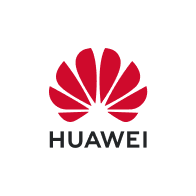-
5G - 5G Automation Driving Mobile Network – Key Scenarios
-
-

5G Automation – a full 80% of mobile operators worldwide say that automation will be the most important way to reduce the operating cost of their next generation networks.
Huawei has identified seven scenarios, within the lifecycle of the mobile network, which can be automated in a step-by-step manner. Within each scenario, the operator can implement different levels of automation, starting with 4G and evolving in the 5G era.
Currently, the OPEX of telecom operators remains high. With the advent of the 5G era, networks become much more complex, posing the following challenges: difficult network O&M due to coexistence of multiple RATs, multiple frequency bands, and HetNet; unleashing the full potential of new technologies, such as Massive MIMO; coordinating among a variety of services in real-time while ensuring service experience.
Intelligent technologies need to be introduced at edge, local, and cloud to build a three-layer autonomous driving network architecture. Mobile networks are distributed with massive sites, and there are a lot of real- time processing requirements. Local intelligence should be implemented with the coordination between site nodes and domain nodes so as to realise intra-layer autonomy and efficient collaboration.
Evolution towards autonomous driving networks cannot be accomplished at one stroke. It should be approached scenario by scenario. This white paper aims to share Huawei’s insights and initiatives in this brand-new field, and accelerate the process of all-scenario autonomous driving mobile networks.
Focusing on operations throughout the entire lifecycle, the white paper describes seven key scenarios and analyses five key capabilities for each of these scenarios. It can be an insightful reference to inspire the way towards autonomous driving networks for the telecom industry.
©2019 Huawei
-
Related Reports
-
 Read more
Read moreCapturing the 5G FWA opportunity: Ericsson white paper
Capturing the 5G FWA opportunity: A household view. Download here. How fixed wireless access for households capture the connectivity market.…
-
-
 Read more
Read moreEricsson Mobility-Report November 2023
Ericsson Mobility-Report November 2023 Continued strong uptake of 5G, with around 600 million new subscriptions added globally during 2023, shows…
-
-
 Read more
Read more5G-Monetization – Ericsson Mobility Report
5G-Monetization – Ericsson Mobility Report In many of my recent interactions with communications service providers, sustainability and revenue growth have been…
-
